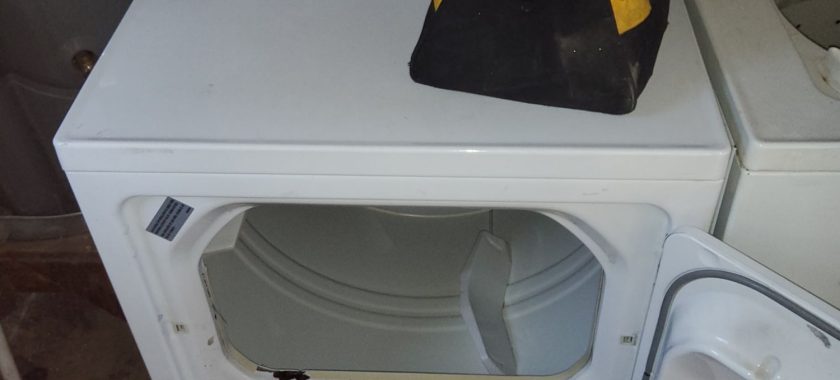A washing machine is expected to make laundry easier, not create additional problems. One of the most frustrating outcomes after a wash cycle is finding your clothes overly wrinkled, creased, and difficult to straighten. When garments come out looking worse than they went in, the issue often points to two primary causes: incorrect spin speed settings or malfunctioning drum movement. Understanding how these mechanisms work helps homeowners recognize why the problem occurs and what steps can be taken to prevent it.
Why Spin Speed Matters
The spin speed determines how fast the drum rotates to remove water from the clothes. Modern washers provide multiple spin options because different fabrics require different handling. For example, delicate materials such as silk or thin cotton should be washed with low spin speeds to prevent creasing and stretching. Heavier fabrics like towels or jeans can handle higher speeds.
However, if a user unknowingly chooses a spin speed that is too high for the load, the machine may over-compress the clothes. The excessive force causes the garments to twist tightly around each other, leading to deep-set wrinkles that are difficult to remove even with ironing or steaming. On the opposite side, using too low a spin speed on a heavy load may leave the clothes wetter than necessary. When overly damp items sit in a drum or laundry basket, they develop wrinkles quickly because the weight of the wet fabric pulls on itself.
Additionally, mixed loads with multiple fabric types can complicate the spin process. If thick items and delicate items are washed together, the machine may not balance the load properly, resulting in uneven spinning and increased wrinkling. Choosing the correct spin cycle and separating fabrics thoughtfully is key to preventing this issue.
The Role of Drum Movement
While spin speed is a user-controlled setting, drum movement relies on the internal mechanics of the washing machine. The drum must rotate smoothly and consistently to tumble clothes properly. If something interferes with that motion, the laundry may become tangled or pressed tightly against the drum walls, causing severe wrinkling.
Several mechanical issues can contribute to improper drum movement:
1. Worn Drum Bearings
Drum bearings support the drum while it spins. When these wear out, the drum may wobble, shake, or rotate unevenly. This imbalance reduces proper tumbling and creates tightly packed folds in the laundry.
2. Faulty Motor or Drive Belt
A malfunctioning motor or worn drive belt can prevent the drum from spinning at the intended speed. Slow or inconsistent rotation causes clothes to cluster in one area, leading to heavy wrinkling.
3. Obstructed Drum Path
Small items such as coins, buttons, or fabric pieces can lodge between the inner drum and outer tub. This obstruction may slow down or restrict movement entirely, forcing garments to twist in unnatural ways.
4. Damaged Suspension or Shock Absorbers
If the washer shakes excessively during spin cycles, the internal suspension system may be failing. Excess vibrations interfere with smooth drum rotation, which can cause bunching and wrinkling of the load.
Incorrect Load Size and Loading Technique
Even a fully functional machine can leave clothes wrinkled if it is loaded improperly. Overloading is a common mistake that restricts the drum’s ability to tumble clothes freely. When garments are packed too tightly, they rub harshly against each other instead of circulating gently. This compression leads to folds and wrinkles that remain long after the cycle ends.
Underloading can cause trouble as well. With too few items in the drum, the washer may lose balance, causing aggressive spinning that forces the clothing to bunch together.
Improper loading techniques such as stuffing sleeves, pant legs, or long garments into tight spaces also contributes to deep wrinkles.
Fabric Care and Washing Habits
Sometimes the cause of wrinkled laundry has little to do with mechanical issues and more to do with daily habits. Leaving clothes sitting in the drum after the cycle ends is one of the most common reasons people experience wrinkles. Even a short delay can cause damp clothing to crease along the walls of the drum.
Incorrect detergent usage can also affect wrinkling. Too much detergent, especially in high-efficiency machines, creates excess suds that prevent clothes from circulating smoothly. Without proper movement, the garments may twist and crease.
When to Call a Professional
If adjusting spin speeds, separating fabrics, and improving loading habits still does not solve the problem, the issue likely lies inside the washer. A professional technician can inspect the drum, belt, motor, bearings, and suspension system to identify the exact cause. Attempting to disassemble or repair these components without experience is unsafe and can lead to further damage.
Expert service ensures your washer operates smoothly and extends its lifespan while preventing recurring laundry issues.
For reliable, fast, and professional repair of washing machines, contact Chula Vista Appliance Repair Company. Their certified technicians can accurately diagnose drum and spin-related problems and restore your washer to optimal performance. Call today to schedule your service and enjoy wrinkle-free laundry with every cycle.
Contact us
(619) 880-5508


